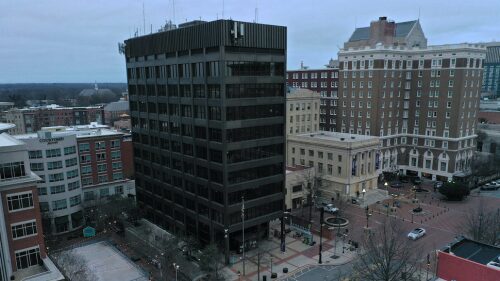On a hot summer day, longtime Upstate residents know there’s a spot that remains cool: the Stumphouse Tunnel located at Stumphouse Park in Walhalla, SC (~1.25 hours from Greenville). As you escape the heat, imagine the 1,600-ft tunnel filled with blue cheese. Back in the day, that was the reality.
We’re taking a look back at the tunnel’s history, from abandoned railroad site to revolutionizing cheese curing.
1852 | Digging the tunnel begins with the intention of building the Blue Ridge Railroad through it, connecting the Midwest with the Port of Charleston by train.
1859 | The estimated completion date for the project was in two years, but tensions between the North and South on the brink of the Civil War halted work, leaving the tunnel empty.
After the war, the project was never reactivated and the tunnel was abandoned for 80 years.
1940 | A Clemson A&M College professor realized the conditions in the tunnel were favorable for curing blue cheese, and the Dairy Department cleared debris from the tunnel, moved in equipment for cheese curing, and experimented with curing in the tunnel.
1941-1944 | When World War II began, production slowed down and the work halted.
1951 | Clemson A&M College purchased the tunnel.
1953 | “Operation Blue Cheese” was re-initiated, and milk from Clemson’s 680-animal dairy herd was made into Roquefort-style blue mold cheese on campus, which was transferred to the tunnel for curing. By October 1953, 2,500 lbs were curing in the tunnel.

An aerial view of Poole Agricultural Center and Newman Hall in 1955. | Photo via Clemson University Historical Images
1956 | When the Agricultural Center in Newman Hall was built at Clemson, air-conditioned cheese ripening rooms duplicated the tunnel’s conditions for on-campus production and research.
1958 | All making and curing of blue cheese was moved to campus.
Today, each batch (520 lbs) of Clemson Blue Cheese is aged for six months before it’s scraped and packaged by hand, contributing to 25,000 lbs of blue cheese made by the university each year. Get a taste.












